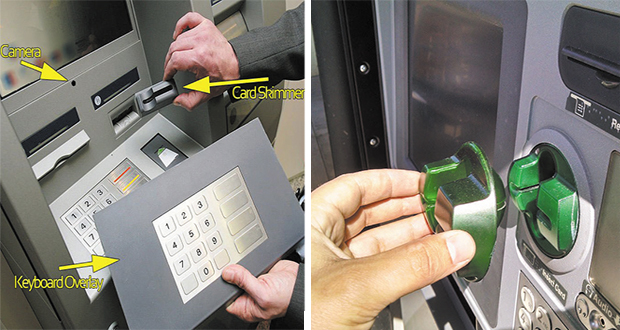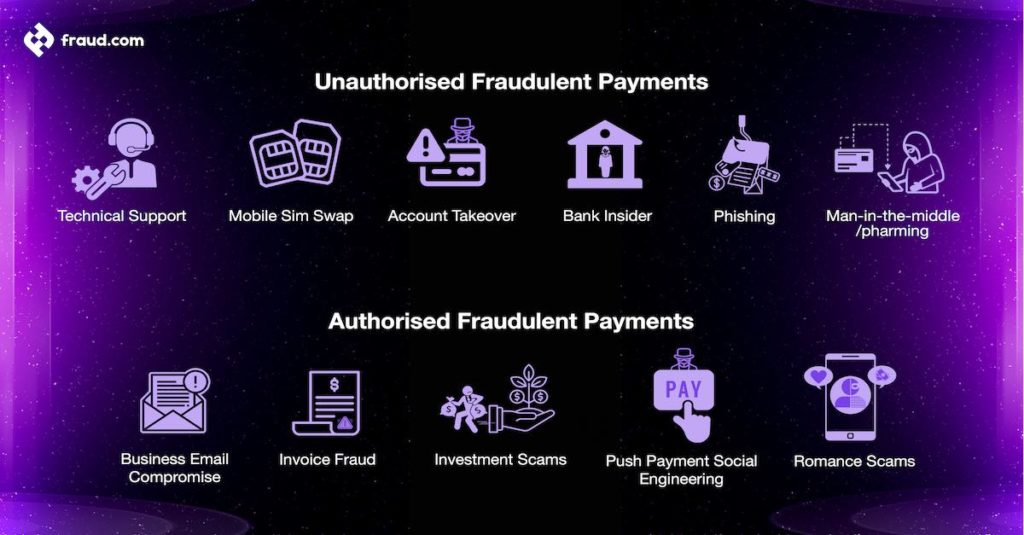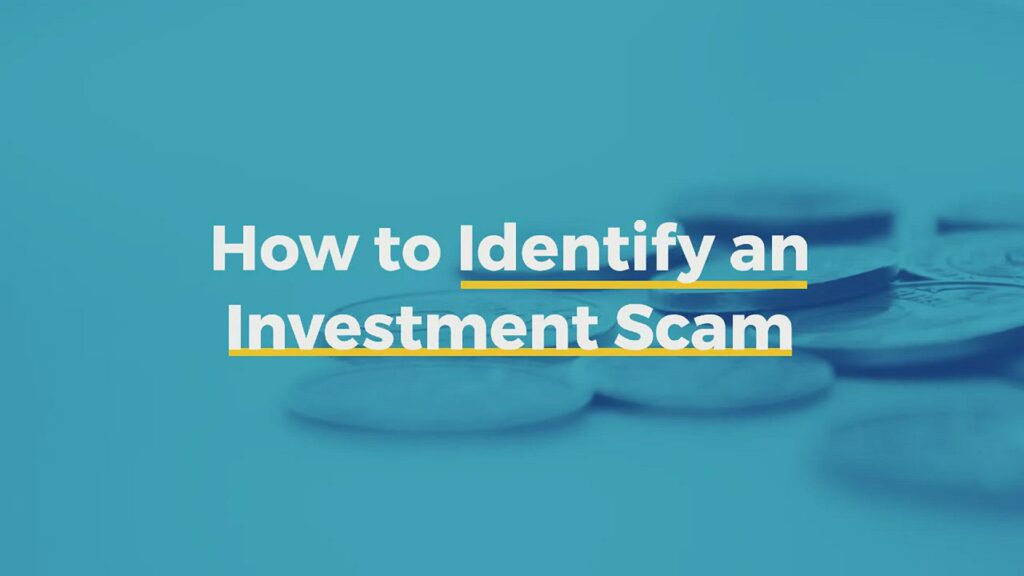Unveiling the Top 5 Banking Scams Plaguing the USA
In today’s digital age, our financial well-being hinges on the security of our bank accounts. Unfortunately, cunning scammers are constantly devising new tricks to steal hard-earned money. This can leave us feeling vulnerable and unsure of how to protect ourselves. Banking scams continue to be a significant threat to consumers and financial institutions alike.

This guide will lighten the top 5 banking scams plaguing the USA. We’ll delve into how these scams work, the red flags to watch out for, and the crucial steps you can take to safeguard your finances. By arming yourself with knowledge, you can become a more informed and vigilant banking customer, less susceptible to these devious tactics.
So, whether you’re a seasoned banker or starting out, this guide is for you. Let’s unveil these top scams and empower ourselves to fight back! We delve into the top 5 banking scams that have impacted individuals and businesses across the USA.
1. Phishing Attacks:
The information you provided is spot on! Phishing attacks are indeed a major concern in banking, specifically because they target the sensitive information scammers can use to steal your money. Here’s how phishing attacks play out in the banking context:
Targets:
- Login Credentials: Username, password, and any secondary verification factors.
- Personal Information: Social Security number, date of birth, address – anything that could be used for identity theft.
- Account Details: Bank account number, routing number – information needed to move money out of your accounts.

How it affects Banks:
- Financial Losses: When scammers gain access to accounts, they can drain them of funds, causing significant losses for both the bank and the customer.
- Reputation Damage: Successful phishing attacks can erode trust in a bank’s security measures.
- Increased Costs: Banks need to invest heavily in security measures and customer education to combat phishing.
What Banks Do:
- Security Measures: Banks implement multi-factor authentication, encryption, and fraud detection systems.
- Customer Education: Banks raise awareness about phishing scams through email campaigns, website information, and customer service interactions.
Remember:
- Banks will never ask for sensitive information via email or text.
- If you’re unsure about a message, contact your bank directly through a verified phone number or by logging in to your online account through a trusted source (not a link in an email).
2-Identity theft: identity theft is another major threat lurking within the realm of banking scams. Here’s a breakdown of how identity theft plays out in banking:

How it Works:
- Criminals steal your personal information, such as your Social Security number, name, address, or date of birth. This information can be obtained through various means, including phishing attacks, data breaches, or physical theft of wallets or purses.
- Once armed with your information, they can use it to:
- Open new bank accounts in your name. These accounts can then be used to launder money or make fraudulent purchases.
- Take out loans in your name, leaving you with the burden of repaying them.
- Drain your existing bank accounts by transferring funds or making unauthorized withdrawals.
Impact on Banking:
- Financial Losses: Identity theft in banking leads to significant financial losses for both individuals and banks.
- Increased Fraudulent Accounts: The opening of fraudulent accounts creates a strain on banks’ resources and verification processes.
- Erosion of Trust: Identity theft cases can damage public trust in the banking system’s ability to protect customer information.
What Banks Do:
- Fraud Detection Systems: Banks utilize sophisticated systems to monitor account activity for suspicious patterns that might indicate identity theft.
- Customer Verification: Banks may implement stricter verification procedures for opening new accounts or making significant transactions.
- Security Awareness Campaigns: Banks educate customers about identity theft and how to protect their personal information.
How to Protect Yourself:
- Be cautious about sharing personal information: Don’t readily share your Social Security number or other sensitive details unless absolutely necessary.
- Monitor your bank statements and credit reports regularly: Look for any unauthorized transactions or inquiries.
- Use strong passwords and enable multi-factor authentication: This adds an extra layer of security to your accounts.
- Shred any documents containing personal information before discarding them.
By staying vigilant and taking these precautions, you can significantly reduce your risk of falling victim to identity theft in banking.
3-ATM skimming: ATM skimming is a global issue and isn’t isolated to just the USA. However, there might be some specific statistics or trends relevant to the United States that I can’t access due to my safety restrictions on providing real-time information.

Here’s what I can share about ATM skimming in the context of banking in the USA:
- Prevalence: According to a report by unionprogress.com, ATM skimming remains a significant threat in the USA, though the exact number of incidents might vary year to year.
- Methods: Skimming techniques used in the USA might be similar to what I described earlier, but scammers may adapt their methods over time.
- Law Enforcement: Authorities in the USA work to crack down on ATM skimming rings and prosecute those involved.
To stay updated on ATM skimming trends specific to the USA, you can search for reports from reputable organizations like the ones mentioned above.
Here are some additional tips to protect yourself from ATM skimming in the USA:
- Use ATMs at familiar locations: Prefer ATMs inside bank branches or well-lit areas with security cameras.
- Consider using contactless payments: If your bank card offers contactless payment options like tap-to-pay, you can avoid inserting your card altogether.
- Report suspicious activity: If you suspect an ATM has been tampered with, notify the bank and local authorities immediately.
By following these precautions and staying informed about ATM skimming tactics, you can help safeguard your finances when using ATMs in the USA.
4. Account Takeover Fraud:
Account takeover fraud (ATO) is a serious threat plaguing the USA banking system. Here’s a breakdown of how it works and its impact:

How It Works:
Criminals employ various tactics to gain unauthorized access to your bank account. Here are some common methods:
- Phishing Attacks (as discussed earlier): Deceptive emails, texts, or calls lure you into revealing login credentials or clicking malicious links that install malware to steal them.
- Malware: Downloaded unknowingly, malware can capture your keystrokes, including login details, when you access your bank account.
- Data Breaches: If a company you do business with experiences a data breach, your login information could be compromised and sold on the dark web.
- Social Engineering: Scammers use deception and manipulation to trick you into divulging personal or account information.
Once they have your login details, criminals can:
- Transfer funds to their own accounts.
- Make unauthorized purchases.
- Change account information to lock you out and continue their fraudulent activity.
Impact on USA Banking:
- Financial Losses: ATO scams result in significant financial losses for both individuals and banks in the USA. According to a report by complyadvantage.com, losses due to ATO in the US alone amounted to a staggering $11 billion in 2021.
- Erosion of Trust: Successful ATO cases can damage public trust in the security measures of banks in the USA.
- Increased Costs: Banks need to invest heavily in cybersecurity measures and fraud detection systems to combat ATO.
What Banks in the USA Do:
- Multi-Factor Authentication (MFA): This adds an extra layer of security by requiring a second verification step beyond just your username and password.
- Fraud Detection Systems: Banks use sophisticated software to monitor account activity for suspicious patterns that might indicate a takeover attempt.
- Customer Education: Banks raise awareness about ATO scams through campaigns and information on their websites and mobile apps.
How to Protect Yourself in the USA:
- Be Wary of Phishing Attempts: Don’t click on suspicious links or attachments in emails or texts, and never reveal your login information through these channels.
- Use Strong Passwords and Enable MFA: Create complex passwords for your bank accounts and enable MFA wherever available.
- Monitor Your Accounts Regularly: Review your bank statements and online account activity frequently for any unauthorized transactions.
- Report Suspicious Activity: If you suspect your account has been compromised, contact your bank immediately.
5. Investment Scams:
Investment scams are a constant threat in the USA, preying on people’s hopes of financial gain. Here’s a breakdown of some common types of investment scams plaguing the USA:

1. High-Yield Investment Programs (HYIPs):
- Promise: Unrealistically high returns with little to no risk.
- Reality: These programs are often Ponzi schemes, where early investors are paid with money from new investors. The scheme crumbles when the flow of new investors dries up.
2. Pump-and-Dump Schemes:
- Promise: A chance to buy undervalued stocks that are about to explode in price.
- Reality: Scammers artificially inflate the price of a stock through misleading promotions, then sell their shares at a high price before the bubble bursts, leaving unsuspecting investors with worthless stock.
3. Affinity Scams:
- Promise: Investment opportunities targeting a specific group, like a religious community or senior citizens, often play on trust and familiarity.
- Reality: These scams exploit trust within a community to sell unsuitable or fraudulent investments.
4. Celebrity Investment Tips:
- Promise: Follow a celebrity’s investment advice to get rich quick.
- Reality: Often, these endorsements are fabricated or celebrities are unknowingly used to promote scams.
5. Unsolicited Investment Offers:
- Promise: Lucrative investment opportunities are presented through unexpected calls, emails, or social media messages.
- Reality: These are typically phishing attempts to steal your personal information or convince you to invest in bogus schemes.
Red Flags to Watch Out For:
- Guaranteed Returns: No legitimate investment can guarantee returns.
- Unsolicited Offers: Be wary of investment opportunities that come to you out of the blue.
- High-Pressure Sales Tactics: Legitimate investment firms won’t pressure you to make a quick decision.
- Unregistered Investments: Verify the legitimacy of an investment opportunity with regulatory bodies in the USA like the Securities and Exchange Commission (SEC).
Protect Yourself:
- Do Your Research: Never invest in something you don’t understand. Research the company, the investment product, and the people involved.
- Beware of Get-Rich-Quick Schemes: If it sounds too good to be true, it probably is.
- Don’t Invest Under Pressure: Take your time and seek professional financial advice before making any investment decisions.
- Invest with Reputable Institutions: Only invest with licensed and regulated financial advisors or firms.
Conclusion: Knowledge is Your Shield Against Banking Scams
The world of banking can be daunting, especially with the ever-evolving tactics of scammers. However, by unveiling the top 5 banking scams plaguing the USA – phishing attacks, identity theft, ATM skimming, account takeover fraud, and investment scams – you’ve gained valuable knowledge to protect yourself.
Remember, the key is vigilance. Be wary of unsolicited offers, unrealistic promises, and tactics that create a sense of urgency or fear. Don’t hesitate to verify information directly with your bank or trusted financial advisor. Leverage the security features offered by your bank, like multi-factor authentication, and monitor your accounts regularly for any suspicious activity.
By staying informed and taking proactive steps, you can become a more confident and secure banking customer. Don’t let these scams become a reality in your life. Fight back with knowledge and empower yourself to safeguard your hard-earned money!
Additionally:
- Consider including resources for further information, such as websites of relevant government agencies (e.g., Federal Trade Commission) or consumer protection organizations.
- Briefly touch upon the importance of reporting scams to help authorities track and dismantle these criminal operations.
This concludes your guide on the top 5 banking scams in the USA. Now go forth, informed and empowered, to navigate the world of banking with confidence!


